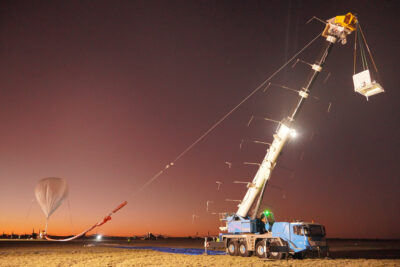Photovoltaic-powered exploration punctuates the year
By Giang Lam|December 2021
The Aerospace Power Systems Technical Committee focuses on the analysis, design, test or application of electric power systems or elements of electric power systems for aerospace use.
Astronauts in June installed two Roll-Out Solar Arrays — of six planned new solar arrays — on the International Space Station. The ROSAs are solar cells on flexible carriers for stowage and will supplement the ISS’ aging flexible solar arrays in operation since 2000. The ROSA arrays, which are smaller and use higher-efficiency triple-junction solar cells than the original arrays’ silicon solar cells, are positioned in front of the original arrays. When fully deployed, each ROSA will stretch 19 meters long by 6 meters wide. Once completed, the electrical power capability on the ISS will be boosted by 20% to 30% from its current 240 kilowatts in direct sunlight. Deployed power output of the ROSA arrays has been per analytical predict on-orbit, accounting for environmental conditions.
NASA’s Lucy spacecraft was launched from Cape Canaveral in Florida in October to begin its mission of studying the Trojan asteroids as they trail and lead in the orbit of Jupiter. Lucy’s first asteroid stop will be in 2025, followed by flybys of an additional seven Trojan asteroids between 2027 and 2033. The spacecraft is powered by two flexible solar arrays that stow about 4 inches thick and each solar array was supposed to unfurl into a 24-feet diameter circular wing. The solar arrays were commanded to deploy about an hour after launch, but NASA received confirmation that one of the solar arrays was fully deployed and latched, while the second array was only partially unfurled. Both solar arrays will supply about 500 watts at the approximate radial distance of Jupiter from the sun. The solar arrays are designed to provide varying voltages at solar distances from less than 1 astronomical unit to 5 AU on its trajectory from launch to the Trojan asteroids.
In August, NASA installed a ROSA and a Didymos Reconnaissance and Asteroid Camera for Optical navigation, or DRACO, onto its Double Asteroid Redirection Test spacecraft as part of the final assembly prior to launch scheduled for November. DART’s mission is to demonstrate the kinetic impactor technique to change the motion of an asteroid, Didymos, by hitting its moonlet, Dimorphos, in space. A small portion of the DART solar arrays is configured to demonstrate Transformational Solar Array technology, which uses reflective concentrators to increase the solar intensity by a factor of three onto high-efficiency solar cells.
NASA set the launch date for the James Webb Space Telescope for no earlier than Dec. 22 on an Ariane 5 launch vehicle out of Kourou, French Guiana. After almost two decades of development and construction, the JWST arrived via ship in French Guiana in October. The telescope will use longer infrared wavelengths to look much closer to the beginning of time and hunt for the unobserved formation of the first galaxies. The JWST will operate near the Earth-Sun L2 Lagrange point, approximately 1.5 million kilometers beyond Earth’s orbit, where the telescope will stay in line with the Earth as it moves around the sun. The orbital position will allow the satellite’s large sunshield to protect the telescope from the sun-Earth’s light and heat. JWST’s electrical power systems consists of rigid solar panels producing 2 kilowatts of nominal power, rechargeable lithium-ion batteries, a solar array regulator with redundant buck converters for peak power tracking, a power control unit and a telemetry acquisition unit.



































